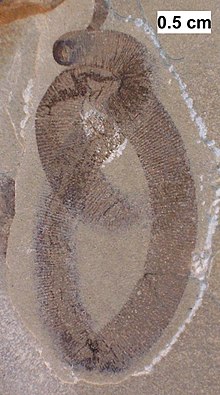Soft-bodied organism

Soft-bodied organisms are
are also soft-bodied organisms by definition.All animals have a
Commonality
Most soft-bodied animals are small, but they do make up the majority of the animal
"In short, if all the matter in the universe except the nematodes were swept away, our world would still be dimly recognizable, and if, as disembodied spirits, we could then investigate it, we should find its mountains, hills, vales, rivers, lakes, and oceans represented by a film of nematodes. The location of towns would be decipherable, since for every massing of human beings there would be a corresponding massing of certain nematodes. Trees would still stand in ghostly rows representing our streets and highways. The location of the various plants and animals would still be decipherable, and, had we sufficient knowledge, in many cases even their species could be determined by an examination of their erstwhile nematode parasites."[4]
Anatomy
Not being a true
While lack of a skeleton typically restricts the body size of soft-bodied animals on land, marine representatives can grow to very large sizes. The heaviest soft-bodied organisms are likely the
Fossil record

The lack of hard parts in soft-bodied organisms makes them extremely rare in the
References
- ^ Marieb, Elaine; Hoehn, Katja (2007). Human Anatomy & Physiology (7th ed.). Pearson Benjamin Cummings.
- ^ ISBN 0-03-025982-7
- ^ Greenstreet, S.; Robinson, L.; Reiss, H.; Craeymeersch, J.; Callaway, R.; Goffin, A.; Jørgensen, L.; Robertson, M.; Kröncke, I.; de Boois, I.; Jacob, N.; Lancaster, J. (2007) Species composition, diversity, biomass and production of the benthic invertebrate community of the North Sea Fisheries Research Services Collaborative Report No 10 (2007): 67 pp.
- ^ Cobb, N. A. (1914). Nematodes and their relationships. Yearbook, United States Department of Agriculture. pp. 457-490 (esp. p. 472).[permanent dead link]
- ISBN 978-0030266683.
- ^ O'Shea, S. (2003) Giant Squid and Colossal Squid Fact Sheet The Octopus News Magazine Online.
- ^ "Lion's Mane Jellyfish - Reference Library". redOrbit. Retrieved September 3, 2010.
- ^ Carwardine, Mark (1995) The Guinness Book of Animal Records. Guinness Publishing. p. 232.
- ^ Dunn, Casey (2005) Siphonophores. Retrieved July 8, 2008.
- ISSN 0022-3360.
- ISBN 0-412-47990-7
